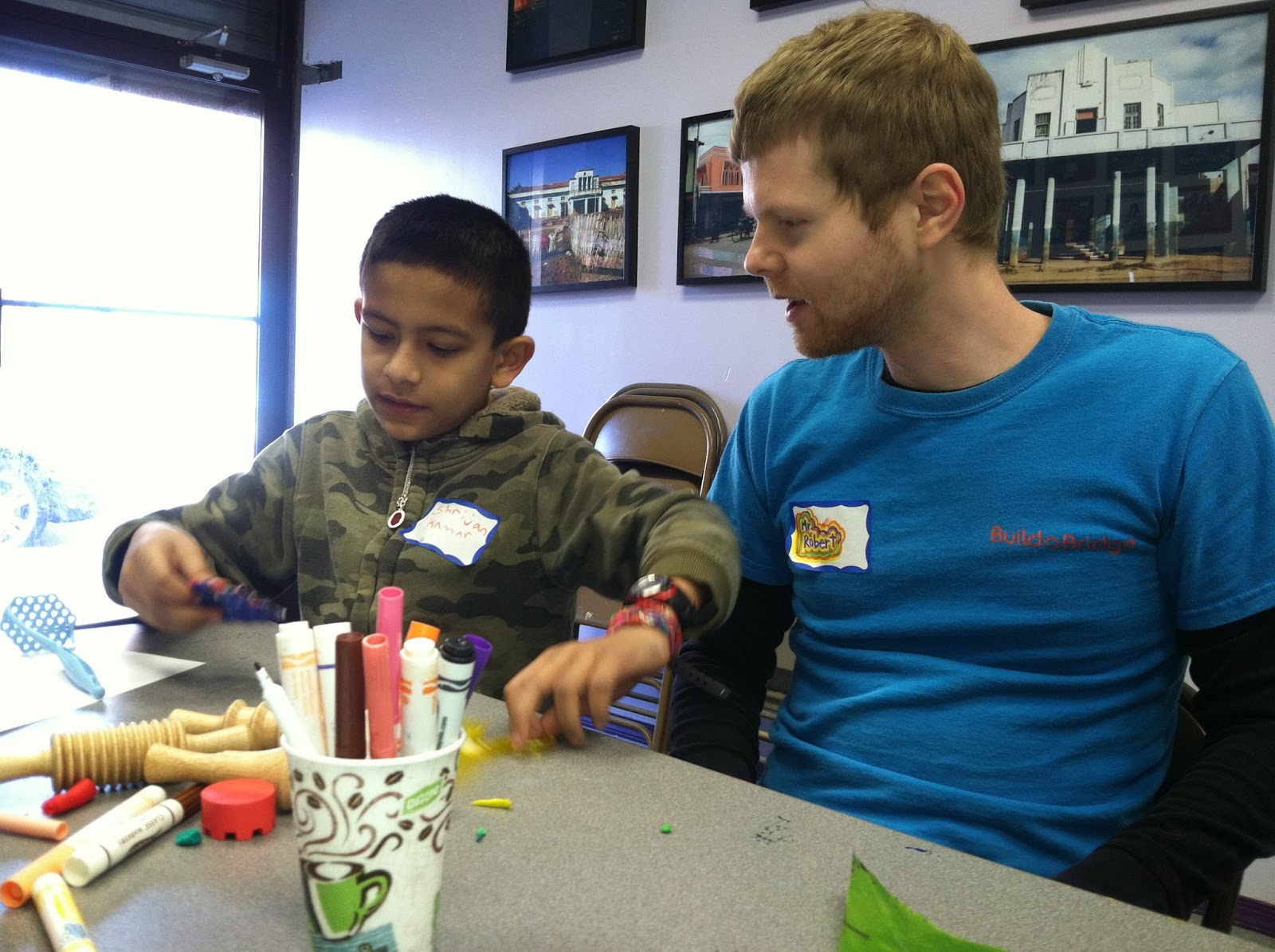 |
| Teaching artist assistant Robert Kelleher works with a child on his project |
For the past several weeks in the Bhutanese movement and visual art group we have been discovering and unfolding the metaphor that just as some art materials create art work that is impermanent, semi-permanent, and permanent, there are things in life that are impermanent, semi-permanent, and permanent. The last two group sessions have focused on permanent art. The children have been imprinting sculpey clay with the soles of shoes and other found objects, that we then bake and bring back to them. The children have started the process of writing narrative stories about their "artifact" sculptures using words and symbols. As they explore how their sculptures have hardened and become permanent (unless broken), they have connected the idea that they also leave artifacts of themselves and can have a permanent imprint on the world.
Children shared that by helping each other, caring for others, and sharing things with their siblings, they leave a positive imprint. Just this last session we talked about the life long imprint they would like to leave, children began expressing all of the things they would like to be as they grow up. Some responses included a rock star, the president, a teacher, an artist, and a few are interested in becoming doctors who help to heal people. Children have been continually working on the social skills of collaboration, turn-taking, respecting one another, honoring their personal space and sharing public space, sharing materials and ideas, and listening and welcoming others. The children are challenged to do these things in every ritual, transition, and art experience throughout our sessions.
We have also been exploring the life cycle of the Monarch Butterfly, particularly the migration and metamorphosis patterns. We have also learned that while the life of the Monarch is constantly changing and they are often migrating they also have a lasting effect or imprint on the environment. Children have collaboratively choreographed dances using the composition skills of beginning, middle, and end, original creative movement invention, and props to tell the story of their own imagined butterflies. The dances tell of butterflies who find long lost friends, butterflies who had to leave their homes to find the food they needed to grow, butterflies who have lost their parents, butterflies who go north, then south, then north, then south, and butterflies who bring joy to the places they go. The children observed one another's dances as an audience at a professional performance, creating a stage space and an audience space and clapping eloquently for one another. -- written by Julia Crawford, Lead Therapeutic Movement Instructor


No comments:
Post a Comment